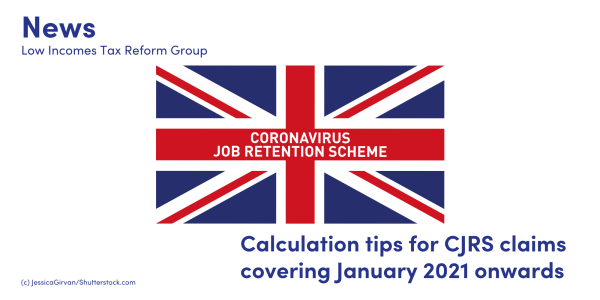Calculation tips for CJRS claims covering January 2021 onwards
This article highlights some important Coronavirus Job Retention Scheme (CJRS) calculation considerations that will arise over the coming months, which are particularly important for employers with variably paid employees.

Content on this page:
Under the Job Retention Scheme, an employer can claim a grant so that a ‘furloughed’ worker can receive up to 80% of their usual wages, via their employer’s payroll, up to a total of £2,500 each month.
As a reminder, under the current version of the Job Retention Scheme (in place from 1 November 2020), for employees whose pay varies and who were previously furloughed or eligible to be furloughed under the original scheme (running from March 2020 to 31 October 2020), employers should calculate their ‘usual wages’ based on the higher of:
- The wages earned in the corresponding calendar period in the previous tax year
- The average wages payable in the tax year 2019 to 2020
The following calculation issues are important for employers to note for January, February, March and April 2021 claims.
January 2021 claims
HMRC’s JRS calculator on GOV.UK contained a software error, which has now been corrected.
If you used the calculator before 21 January 2021 to work out January 2021 claims for employees that are variably paid, you’ll need to re-calculate their claims if:
- you followed the incorrect instructions in the calculator and used an employee’s pay for January 2019 as reference pay, instead of January 2020, and
- their pay was different in January 2019 to January 2020.
If you used an employee’s January 2020 pay as reference pay, you do not need to take any action, as this is correct.
If, after you have made your re-calculation, you find out your claim was incorrect and:
- you have claimed too much, you should amend this in your next claim or let HMRC know as soon as possible and make a repayment – further guidance on this is available here
- you have claimed too little, please call the HMRC helpline to amend this by 1 March 2021.
February 2021 claims
The eagle eyed may have spotted that February 2020 was a leap year and so contained 29 days.
This could, potentially, have meant more complexity for employers undertaking calculations for claims relating to February 2021, as when trying to establish what wages were earned in the corresponding period last year, some may have wondered whether they should pro-rate the amount from February 2021 by 28/29.
HMRC has confirmed that claims relating to February 2021 for employees can be based on either the full amount earned in February 2020, or 28/29ths of that amount to account for the leap year. The message from HMRC is either method is fine, and they will not challenge either approach.
March and April 2021 claims
The JRS has been in place since March 2020. By its current end date of 30 April 2021, the JRS will have therefore run for more than a year.
Because of this, the most recent Treasury Direction has altered the way the ‘higher of’ calculation (as set out at the beginning of this article), must be done for March and April 2021. When working out wages for the corresponding calendar period, March 2019 and April 2019 must be used for the corresponding period and not March 2020 and April 2020.
Without this change, the relevant reference periods employers use to calculate the JRS grant will overlap with periods during which the JRS has been running. This could result in employers basing furlough pay for March and April 2021 on periods during which the employee was on furlough and may have had only 80% pay (meaning their furlough pay for these months could be 80% of 80% of wages, and this would not be the intention).
This is confirmed in GOV.UK guidance on calculating how much you can claim:
| Claim month | Lookback period |
|
November 2020 |
November 2019 |
|
December 2020 |
December 2019 |
|
January 2021 |
January 2020 |
|
February 2021 |
February 2020 |
|
March 2021 |
March 2019 |
|
April 2021 |
April 2019 |
